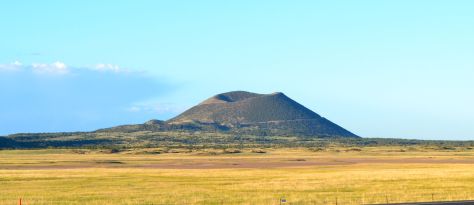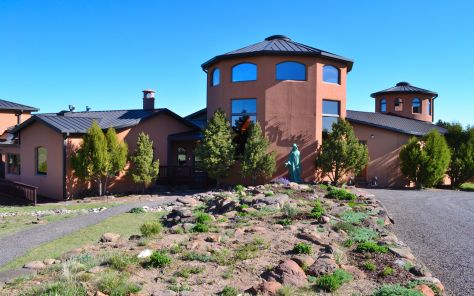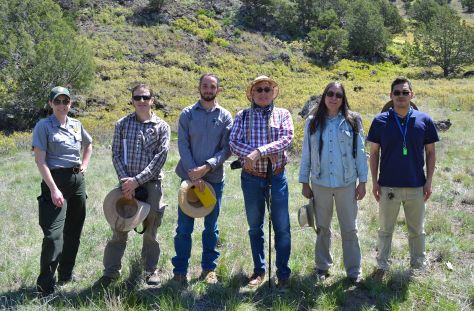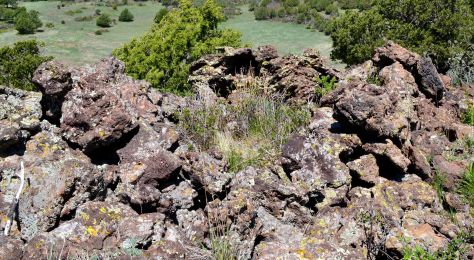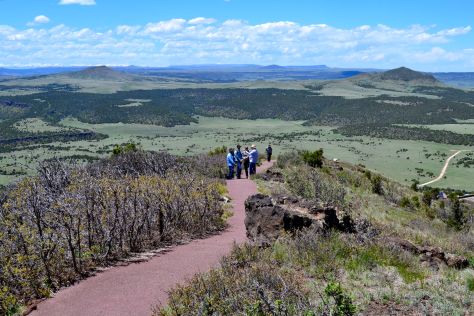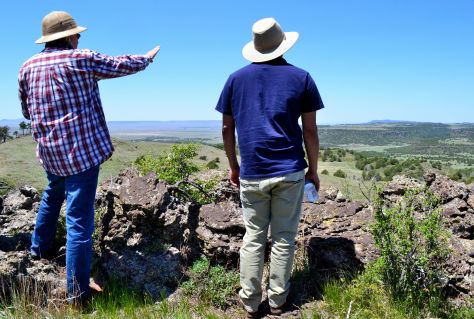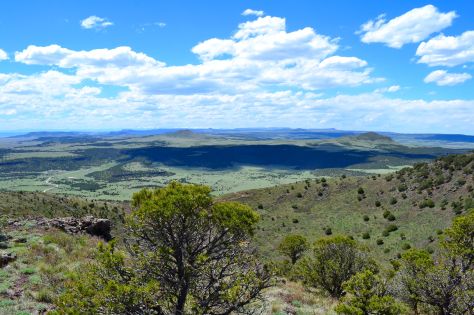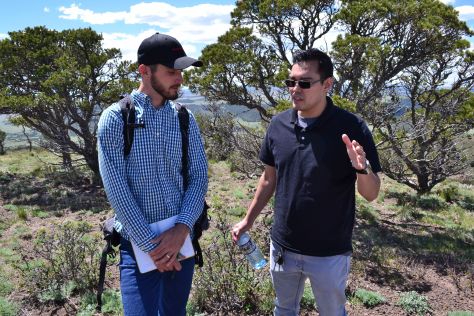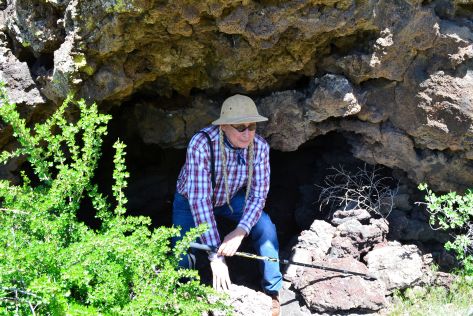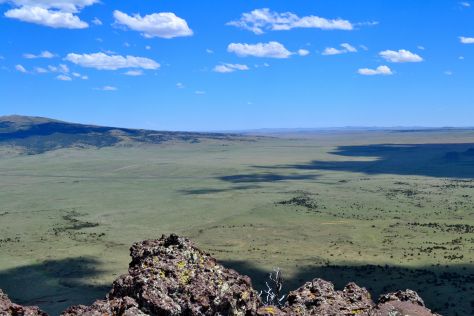
Pawnee tradition preserves a fascinating oracular text, a prophesy of disease and apocalypse and the end of the world – a dire future when the Star of Death “would take possession” of the world. A 1906 narrative by a Pitahawirata community leader named Captain Jim opens when he “was a little boy.” In those days his father, See-tee-de-tah-kee-tah-we-loo-coo, told him “about the songs of these old men.” And that night, “My grandmother then told me the following story…” We don’t know which grandmother related this tradition, but Captain Jim was born circa 1836-1840, so he heard the story sometime during the 1840s. Judging from Captain Jim’s date of birth, both of his grandmothers might have been born around 1790 – his father’s mother was Chay-suh-pah-tos; his mother’s mother was Stah-kee-tah-welah-lee-coo. The story touched on signs portending the end of the world. Moon turning red; the dying of Sun’s light; the vanishing of North Star (Polaris); rising waterways; a great starfall; and the foreboding movement of Upirihkaahuririwisisuʾ or South Star (Canopus). Captain Jim’s grandmother said, “The North Star is the one which is to end all things.” She explained that “when a person died they were taken by the North Star and they were placed upon the pathway which led to the Star of Death – the land of the spirits – the South Star.” The two stretcher constellations (Ursa Major and Ursa Minor) symbolize people who have fallen ill with disease. And “the South Star would come higher, until at last it would capture the people who were carrying the two people upon the stretchers; as soon as the South Star captured these two people upon the stretchers they were to die.” And so “the South Star would take possession of the earth and of the people.” Captain Jim’s tradition touches on Tarahaʾ Raruhraturaaruuta, Buffalo Trail – the South Band Pawnee term for the Milky Way. I believe this name references a mysterious bison divinity that stands at Toos Peh, the ancient mountain portal to Spiritland. Captain Jim’s grandmother explained, “Each year this buffalo was to drop one hair. When all the hairs of the buffalo had come off then the people would not live upon the earth any more.” The tradition said that rising waters would carry away animals, and clam shells “would cry out like babies.” And stars would fall to earth and “mix among people…” And there would be eclipses: “The old people told us that the Morning-Star said that when the time came for the world to end the Moon would turn red… that when the Moon should turn red the people would then know that the world was coming to an end. The Sun was also to shine bright and all at once that brightness would die out and the end would come.” This describes a lunar eclipse and a solar eclipse – common celestial phenomena that occur every year. In astronomy, a “blood red” moon is a term for the moon during a lunar eclipse, and on January 20, 2019 a “Super Blood Wolf Moon” became visible across North America. Then on December 26, 2019 an annular solar eclipse unfolded across Asia, barely visible in Wuhan, China – we can note here that a full solar eclipse reveals the solar corona, the sun’s coronal prominences and filaments. And at that moment on earth at the end of 2019, a new coronavirus had appeared. We can only wonder whether Captain Jim would have had any inclination to connect his apocalyptic family oral tradition to coincidence of this kind. I have the impression that Pawnee storytelling today typically underscores catastrophic disease epidemics as a central factor in the 19th century Pawnee demographic decline. Infectious diseases of various kinds have always existed in Pawneeland, but the spread of new virulent diseases in Pawneeland is typically framed as an outcome of European and American interactions. Historian Richard White wrote in 1983, “Increased contact with Americans brought increased exposure to disease…” And “steady contact with whites made diseases such as syphilis, dysentery, and tuberculosis virtually endemic, and epidemics of influenza, smallpox, and cholera continued to sweep through the villages.” Deadly disease epidemics have sufficient antiquity in Pawneeland to have earned a place in Pawnee cosmology, in traditional explanations for human mortality. And it is notable that when smallpox appeared, the Pawnees blamed South Star, not “white people.” One such account is in the papers of James R. Murie and George Dorsey at the Field Museum of Natural History: “Origin of Sickness Among Indians,” told by Kiwikurawaruksti (Mysterious Buffalo Bull, John Buffalo), a Skidi priest. The story begins, “When Tirawa placed the gods in the heavens, the last one he placed was the South Star. The South Star was to be the home of the dead people.” One time the South Star appeared and there came a cyclone, and one man dreamed that the cyclone appeared and said, “My son, I am the Wind which has just passed over your village. I have life. I visit different parts of the earth and on my journeys I leave behind sickness, so that the people in the country become sick. Sometimes I visit your villages as a man; but though apparently a man, I am really the disease that is to come among the people.” The account then turned to a time when “the people were living upon the Platte river in Nebraska, near Fremont; at this place was the lodge of the animals.” The people left there “and went west upon the Loupe river, and there they made their village, and lived for many years.” This sequence of events seems to indicate that Pawnees were residing on the Flat River in the vicinity of Pahaku during the late 18th century. In those days, “The people were being taught by different animals how to cure various diseases.” And Mark van de Logt’s Monsters of Contact (p. 59-74) features a fascinating analysis of Arikara oral traditions connecting whirlwind imagery to late 18th century disease epidemics. He makes a convincing case that a spectrum of such traditions can be usefully interpreted as glimpses of historical epidemics, and this connection is also evident in Kiwikurawaruksti’s Skidi tradition with its mention of “the Wind.” It is also notable that the cessation of visits from the celestial bringer of disease is associated with the coming of “white people”: “The Indians say that in olden times this mysterious man was seen many times, and each time some sort of disease spread among the Indians. As the white people came among the Indians this sick man was not seen any more and therefore no more epidemics occurred among the Indians.” This curious statement about “white people” might reflect experiences of some kind with American medical practices. Kiwikurawaruksti was born during the mid-1830s, and US documents of the early 1830s includes a long list of Pawnees who were inoculated against smallpox. And Pawnee tradition speaks of one American official who rode around visiting Pawnee camps to distribute medicine during the devastating epidemics of 1876. Pawnee cosmology associates South Star (Canopus) with death, but this might have been separate from a “Star of Disease,” identified with Saturn. Citing Murie and Dorsey, Douglas Parks noted that the ritual use of sweetgrass smudging was therapeutic, and “it was believed that the deity of disease was pushed farther from the village and that the village itself was thereby freed from disease.” Given the deadly epidemics that passed through Pawnee cities long ago, it would be interesting to know whether the Pawnees ever practiced forms of social distancing. But it is clear that communal ceremonies offered a prescribed mode of treatment in Pawneeland. Murie and Dorsey noted that Pawnee Doctor society rites held every autumn served three purposes: “By them they renewed their powers, drove disease from the village, and, by means of their sleight of hand performances, convinced the people that they really possessed the supernatural powers attributed to them.” In the course of these fall rituals, people who were ill received visits from doctors. A spectrum of beliefs and doctoring activities pertained to disease in Pawneeland, and tradition-keepers at the end of the 19th century spoke of those ways. And when Captain Jim was young, his grandmother told him a story that he remembered many years later. And that night long ago in Pawneeland, at the end of the story, the little boy might well have felt worried about the future. And his grandmother might have noticed. She said, “Now, my grandchild, go to sleep and think no more of what I have told you, for you are young yet and must not think about these things.” Coronavirus Chronology – In early April 2020, pondering the coronavirus pandemic, I got curious about the complexities of civic leadership and cultural perspectives and disease transmission processes. I wondered whether an examination of this pandemic might shed some kind of peripheral light on the epidemic tribulations of my Pawnee ancestors. I borrowed an anonymous timeline from social media and I checked the information, and I integrated additional material from various sources. My apologies to the uncited people who transcribed and assembled the information below. To frame this pandemic through a traditional Pawnee lens… As the South Star takes possession of the earth, a tragic number of people worldwide must “get ready to be turned into stars.” And as “the stars in the heavens would look down,” we can only wonder what kind of world will emerge from these days. December 30, 2019 – Dr Li Wenliang messages on WeChat that his hospital in Wuhan, China has seven patients diagnosed with a SARS-like illness, and he has contracted the disease. He is reprimanded by Chinese authorities. December 31, 2019 – China informs the World Health Organization (WHO) that about 41 patients have a mysterious pneumonia. January 5, 2020 – China announces probe into the mysterious pneumonia outbreak. WHO issues a risk assessment on “pneumonia of unknown etiology (unknown cause) detected in Wuhan City, Hubei Province of China.” WHO “does not recommend any specific measures for travellers.” January 7 – China identifies the novel coronavirus. President Xi issues directives for control of the novel coronavirus; this is not known outside China until February 15. January 8 – First CDC warning, issued on “a reported cluster of pneumonia of unknown etiology (PUE)…” January 11 – First known death in China. For a glimpse of White House attitudes in early January, see Jonathan Lemire, “Signs Missed and Steps Slowed in Trump’s Pandemic Response,” New York Times, April 12, 2020: “Twenty current and former administration officials and Republicans close to the White House were interviewed for this account about the critical weeks lost before the president spoke to the nation on Feb. 26.” “The Pentagon first learned about the new coronavirus in December from open source reports emanating from China. By early January, warnings about the virus had made their way into intelligence reports circulating around the government. On Jan. 3, the head of the U.S. Centers for Disease Control and Prevention, Robert Redfield, received a call from his Chinese counterpart with an official warning. Dr. Anthony Fauci, the government’s top infectious disease expert, was alerted to the virus around the same time – and within two weeks was fearful it could bring global catastrophe. Quickly, U.S. intelligence and public health officials began doubting China’s reported rates of infection and death toll. They pressed China to allow in U.S. epidemiologists – both to assist the country in confronting the spread and to gain valuable insights that could help buy time for the U.S. response. U.S. officials also pressed China to send samples of the virus to U.S. labs for study and for vaccine and test development. On Jan. 11, China shared the virus’ genetic sequence. That same day, the National Institutes of Health started working on a vaccine.” January 16 – US House of Representatives sends two articles of impeachment to the Senate. The coronavirus appears in Japan. January 17 – US begins screening arrivals at three airports. January 18 – Alex Azar briefs Trump on coronavirus threat; according to Jonathan Lemire (April 4, 2020 report) “Trump spent much of the conversation wanting to talk about vaping…” January 20 – China reports first known person-to-person transmission. January 21 – Official confirmation of the first known US case of coronavirus in Washington State. January 22 – Trump: “We have it totally under control. It’s one person coming in from China. It’s going to be just fine.” January 23 – Wuhan put under partial quarantine. WHO issues position that epidemic does not yet constitute a global health emergency. January 27 – Joe Biden publishes a warning that Trump has “demonstrated failures of judgment and his repeated rejection of science make him the worst possible person to lead our country through a global health challenge.” January 29 – White House advisor Peter Navarro sends a memo to the National Security Council warning of “the risk of the coronavirus evolving into a full-blown pandemic, imperiling the lives of millions of Americans.” Formation of White House task force on the coronavirus. January 30 – Trump campaign rally, Iowa. WHO declares a global health emergency. Trump: “We think we have it very well under control. We have very little problem in this country at this moment – five – and those people are all recuperating successfully. But we’re working very closely with China and other countries, and we think it’s going to have a very good ending for us.” January 31 – President bans foreign nationals from entering US if they have visited China in prior two weeks. This narrow ban left open significant travel between China and the US, and it was the only major action Trump took through mid-March to address the incipient pandemic. In comments made on various occasions in February and March, Trump cited push-back from unnamed sources that he respected, and he portrayed his decision as an “aggressive action” that was difficult and effective. February 2 – Trump: “We pretty much shut it down coming in from China.” First known death in Philippines. February 4 – Diamond Princess cruise ship put under quarantine in a Japanese harbor. February 5 – The US Senate votes to acquit Trump, ending the impeachment trial. February 8 – First known death of an American in China. February 10 – Trump campaign rally New Hampshire. International WHO research team arrives in China. Trump: “Now, the virus that we’re talking about having to do – you know, a lot of people think that goes away in April with the heat, as the heat comes in. Typically, that will go away in April. We’re in great shape, though. We have 12 cases, 11 cases, and many of them are in good shape now.” February 11 – WHO names the new virus COVID-19. February 12 – Dow Jones closes at an all-time high of 29,551.42. South Korea epidemic begins. February 14 – The first known COVID-19 death in Europe is a Chinese tourist. Health and Human Services and the National Security Council prepare a joint memo with recommendations for community mitigation “significantly limiting public gatherings and cancellation of almost all sporting events, performances, and public and private meetings…” Trump refuses to meet with HHS /NSC. Trump: “And 61 percent of the voters approve of Trump’s handling of the coronavirus.” “And we’re – we have a very small number of people in the country, right now, with it. It’s like around 12. Many of them are getting better. Some are fully recovered already. So we’re in very good shape.” February 15 – Trump golfs, Florida. February 18 – President Xi assures British Prime Minister Boris Johnson that China is “achieving visible progress.” February 19 – Trump campaign rally, Arizona. Iran epidemic begins. Diamond Princess asymptomatic passengers released into US. February 20 – Trump campaign rally, Colorado. Trump: “The Democrats are politicizing the coronavirus. This is their new hoax.” South Korea first death. February 21 – Trump campaign rally, Nevada. February 23 – Peter Navarro sends memo to Trump via National Security Council, noting, “There is an increasing probability of a full-blown COVID-19 pandemic that could infect as many as 100 million Americans, with a loss of life of as many as 1-2 million souls.” Trump: “We have it very much under control in this country.” February 24 – Trump: “The coronavirus is very much under control in the USA… Stock Market starting to look very good to me!” The Dow Jones Industrial Average plunges 1000 points. February 25 – Trump: “CDC and my Administration are doing a GREAT job of handling Coronavirus.” “In fact, we’re very close to a vaccine.” NIH announces clinical trial of antiviral remdesivir. Italy issues list of Lombardy towns in lockdown. The Dow Jones Industrial Average plunges 879.44 points, closing at 27,081.36. February 26 – Trump: “The infection seems to have gone down over the last two days. As opposed to getting larger, it’s actually gotten smaller.” “And the United States is now – we’re rated number one. We’re rated number one for being prepared.” “But we’ve done, really, an extraordinary job. When you look at a country this size, with so many people pouring in – we’re the number one in the world for people coming into a country, by far. And we have a total of 15 cases, many of which, or most – within a day, I will tell you most of whom are fully recovered.” “The fifteen [US cases] within a couple of days is going to be down to close to zero.” “We’re going very substantially down, not up.” CDC announces that an American in California acquired the virus from an unknown source through community transmission. VP Pence put in charge of US program. February 27 – Trump: “We have a situation with the virus. We’ve done a great job. The press won’t give us credit for it.” “If we were doing a bad job, we should also be criticized. But we have done an incredible job. We’re going to continue. It’s going to disappear. One day – it’s like a miracle – it will disappear.” February 28 – Trump campaign rally, South Carolina. “Now the Democrats are politicizing the coronavirus. You know that, right? Coronavirus. They’re politicizing it.” “My administration has taken the most aggressive action in modern history to prevent the spread of this illness in the United States. We are ready.” “And the Democrats single point – talking point and you say it’s – is that it’s Donald Trump’s fault, right.” “Whoever thought of this two weeks ago? Who would’ve thought this could be going on four weeks ago.” February 29 – Trump press conference: “Tremendous amounts of supplies are already on hand. We have 43 million masks, which is far more than anyone would have assumed we could have had so quickly…” First known US death. Washington Governor Inslee announces state of emergency. March 2 – Trump campaign rally, North Carolina. “My administration has also taken the most aggressive action in modern history to protect Americans from the coronavirus.” “Washington Democrats are trying to politicize the coronavirus, denigrating the noble work of our public health professionals…” The Coronaviridae Study Group officially designates the virus as SARS-CoV-2. March 3 – Federal Reserve issues unscheduled cut to interest rates to help faltering US economy. Iran announces that 23 members of its Parliament are infected. March 4 – Trump to Hannity: “If we have thousands or hundreds of thousands of people that get better just by, you know, sitting around and even going to work – some of them go to work, but they get better.” CDC removes certain restrictions on coronavirus testing. March 5 – Trump: “I never said people that are feeling sick should go to work.” “And one of the things I did is, I closed down the borders to China and to other areas that are very badly affected, and really having a lot of troubles, I mean, countries and areas of countries that have had a lot of problem. And I closed them down very early, against the advice of almost everybody. And we have been given rave reviews. And that’s why we have only right now 11 – it’s a lot of people, but it’s still 11 people, versus tremendous numbers of thousands of people that have died all over the world. We have 11.” March 6 – Trump: “Well, job numbers just came out and they’re incredible. The job numbers were tremendous.” “Our numbers are lower than just about anybody. And in terms of deaths, I don’t know what the count is today. Is it 11? Eleven people? And in terms of cases, it’s very, very few. When you look at other countries, it’s a very tiny fraction because we’ve been very strong at the borders.” “So I think we’re in great shape. I mean, I think we’re in great shape. This came unexpectedly a number of months ago. I heard about it in China. It came out of China, and I heard about it. And made a good move: We closed it down; we stopped it.” “I think we’re doing a really good job in this country at keeping it down… a tremendous job at keeping it down.” “I don’t need to have the numbers double because of one ship that wasn’t our fault.” “Anybody right now and yesterday – anybody that needs a test gets a test. We – they’re there. They have the tests. And the tests are beautiful.” “They’re all set. They have them out there. In addition to that, they’re making millions of more as we speak. But as of right now and yesterday, anybody that needs a test – that’s the important thing – and the tests are all perfect, like the letter was perfect. The transcription was perfect, right? This was not as perfect as that, but pretty good.” “I like this stuff. I really get it. People are surprised that I understand it. Every one of these doctors said, ‘How do you know so much about this?’ Maybe I have a natural ability. Maybe I should have done that instead of running for president.” March 7 – Trump golfs, Florida. Asked about future rallies, Trump: “Well, we’ll have tremendous rallies. And we’re doing very well. And we’ve done a fantastic job with respect to that subject on the virus. Yeah.” Asked about whether he is concerned about the coronavirus appearing in DC and at the White House: “No, I’m not concerned at all. No, I’m not. No, we’ve done a great job.” March 8 – Trump golfs, Florida. Trump: “We have a perfectly coordinated and fine-tuned plan at the White House for our attack on Coronavirus.” March 9 – Trump: “The Fake News Media and their partner, the Democrat Party, is doing everything within its semi-considerable power (it used to be greater!) to inflame the CoronaVirus situation, far beyond what the facts would warrant.” “And we have a great economy, we have a very strong economy, but this came – this blindsided the world. And I think we’ve handled it very, very well. I think they’ve done a great job. The people behind me have done a great job.” Italy institutes a national lockdown. US stock market plunge triggers an automatic shutdown. Dr Leana Wen, physician and public health professor: “It appears that out of 1,000 people who have this coronavirus, somewhere between 10 to 30 people will die, compared to one person [out of 1,000] who has the flu.” March 11 – Trump: “We are moving very quickly. The vast majority of Americans, the risk is very, very low. Young and healthy people can expect to recover fully and quickly if they should get the virus.” WHO declares COVID-19 emergency a pandemic. Trump issues a limited travel ban to US by some foreign nationals from 26 European countries. Identifiable US cases hit 1000. March 13 – US national emergency declared. March 15 – The US Federal Reserve cut interest rates close to zero. March 17 – Trump: “I’ve always known this is a – this is a real – this is a pandemic. I’ve felt it was a pandemic long before it was called a pandemic. All you had to do is look at other countries. I think now it’s in almost 120 countries all over the world. No, I’ve always viewed it as very serious.” A leaked federal plan warns that this pandemic “will last 18 months or longer…” March 18 – Coronavirus relief package signed into law with testing support and paid emergency leave. March 19 – New Zealand issues a blanket travel ban for travelers to New Zealand. March 23 – The Dow Jones Industrial Average drops 583 points. New York City confirms 21,000 cases of infection. March 24 – Trump: “I would love to have the country opened up and just raring to go by Easter.” “I think it’s possible. Why isn’t it?” “We lose thousands and thousands of people a year to the flu. We don’t turn the country off. I mean, every year. I mean, think of it. We average 36,000 people, death, death. I’m not talking about cases. I’m talking about death, 36,000 deaths a year. But we have never closed down the country for the flu.” The Washington Post reported (April 15) that about March 24 the White House received a special “goodwill” shipment of 1800 surgical masks from Taiwan. March 25 – By this date over 3.3 million Americans have filed for unemployment. March 27 – Trump signs into law CARES, with $2 trillion for pandemic relief. March 30 – Trump: “When I stopped some very, very infected, very, very sick people, thousands coming in from China long earlier than anybody thought, including the experts. Nobody thought we should do it except me. And I stopped everybody. We stopped it cold. It had never been done before the history of our country.” The Dow Jones Industrial Average drops 915.39 points, closes at 21,636.78. March 31 – Thirty-five US states have stay-at-home orders. April 2 – By this date 6.6 million Americans have filed for unemployment. April 3 – CDC advises Americans to begin wearing cloth masks in public. April 6 – By this date there are over 1.3 million identified coronavirus cases worldwide, with 364,567 known cases in US. Trump: “Take a look at the swine flu. It was a disaster; 17,000 people died. The other administra… they didn’t even know – it was like they didn’t even know it was here.” April 7 – Minimum known US pandemic death toll by this date: over 12,800. April 9 – Minimum known US pandemic death toll by this date: circa 16,700. April 10 – Minimum known US pandemic death toll by this date: 18,638. April 12 – By this date more than 2 million tests have been administered in the US, covering less than 1% of the total population. April 13 – Minimum known US pandemic death toll by this date: over 20,000. April 15 – Minimum known US pandemic death toll by this date: over 30,000. By this date, during the previous four weeks more than 22 million Americans filed for unemployment.






